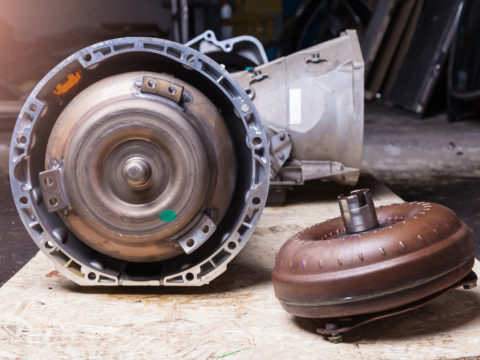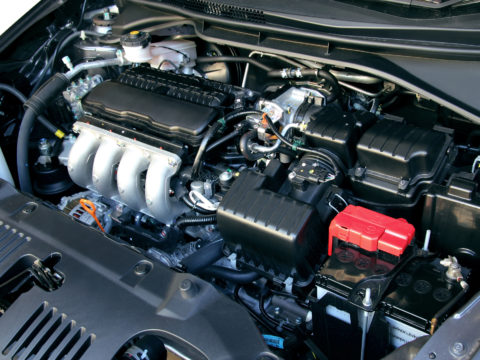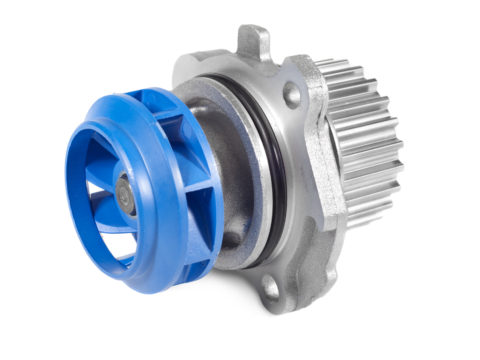Are you hearing a rattling or knocking sound from underneath your hood? Your vehicle’s cam phaser may be to blame and understanding how to quiet cam phaser noise is crucial for maintaining a smooth and efficient engine performance.
Read on for more information about how a cam phaser works, the causes of cam phaser noise, and the tools and equipment needed to quiet the noise.
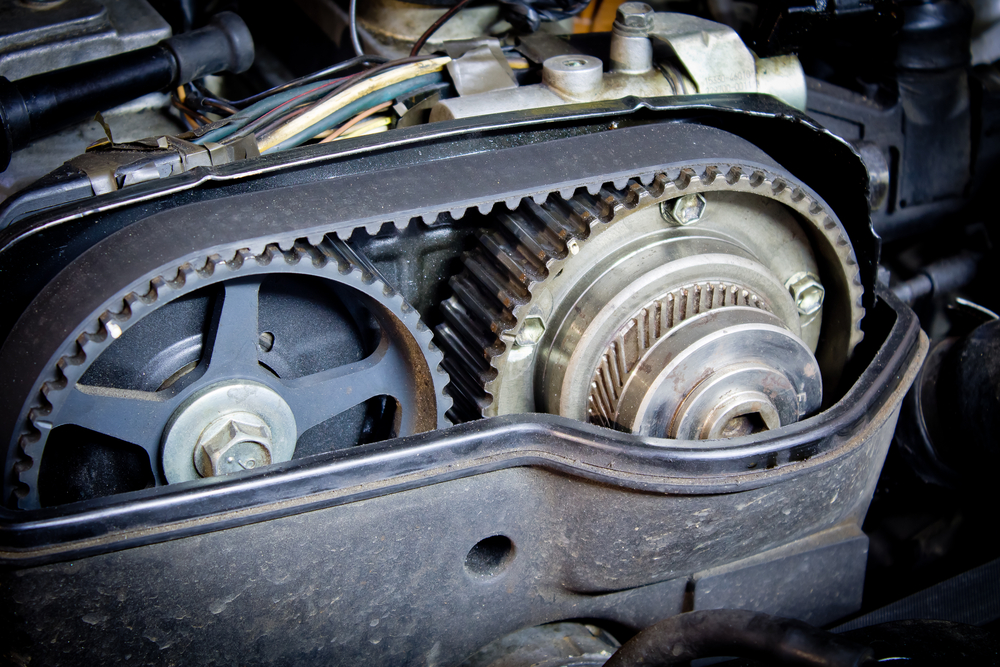
Contents
How a Cam Phaser Works
A cam phaser is an essential component in modern internal combustion engines, responsible for controlling the timing of the intake and exhaust valves. By adjusting the timing of valves, cam phasers help to enhance engine performance, boost fuel efficiency and minimize emissions.
Cam phasers are typically found on overhead camshaft engines with variable valve timing. They are mounted on the end of each camshaft and use hydraulic pressure to rotate the cams relative to their initial position. This rotation changes when the valves open and close during each crankshaft revolution.
Common Cam Phaser Problems
Cam phasers play a crucial role in maintaining optimal engine performance, but they can develop issues over time.
Sticking or Seizing
A sticking or seizing cam phaser is often caused by dirty oil or debris buildup within the mechanism. This issue prevents the camshaft from adjusting its timing correctly, leading to poor engine performance and reduced fuel efficiency.
Excessive Wear
Over time, wear and tear on the internal components of a cam phaser can lead to failure. This includes worn bearings, damaged gears, and broken springs – all of which contribute to erratic engine behavior and potential damage to other parts.
Faulty Variable Valve Timing (VVT) Solenoid
The VVT solenoid controls oil flow to the cam phaser for proper operation. A faulty solenoid may cause incorrect oil pressure levels within the system, resulting in improper functioning of the cam phaser.
Oil Pressure Issues
Oil pressure plays a vital role in regulating camshaft timing adjustments, so any issues with your vehicle’s oil pump or low-quality motor oil could result in inadequate lubrication for your car’s moving parts – including its cam phasers.
Engine Control Module (ECM) Malfunction
The ECM is responsible for controlling various engine functions, including VVT. If there’s a problem with the ECM itself or its communication with other components, such as sensors or solenoids, it could lead to improper functioning of the cam phaser system.
What Does a Bad Cam Phaser Sound Like?
A bad cam phaser can produce various noises that are often described as ticking, knocking, or rattling sounds. These noises can be more pronounced during cold starts and may change in intensity as the engine warms up or when driving at different speeds.
Ticking Noise
The most common symptom of a faulty cam phaser is a ticking noise coming from the engine. This sound is typically caused by excessive wear on the internal components of the phaser, such as worn bearings or gears. The ticking noise usually increases with engine speed and may become louder under load or acceleration.
Knocking Noise
A knocking noise might also indicate an issue with your vehicle’s cam phasers if it occurs in sync with the engine RPMs (revolutions per minute). This type of sound generally points towards problems related to timing chain tensioners, which could affect how well your car runs overall due to incorrect valve timing adjustments made by damaged camshaft actuators.
Rattling Noise During Cold Starts
A rattling noise during cold starts might indicate malfunctioning camshaft actuators. The malfunctioning camshaft actuators can cause fuel consumption to rise, engine performance to decline, and even lead to complete motor breakdown if not dealt with in a timely manner.
What Causes Cam Phaser Noise?
Cam phaser noise can be quite annoying and may indicate an underlying issue with your vehicle’s engine.
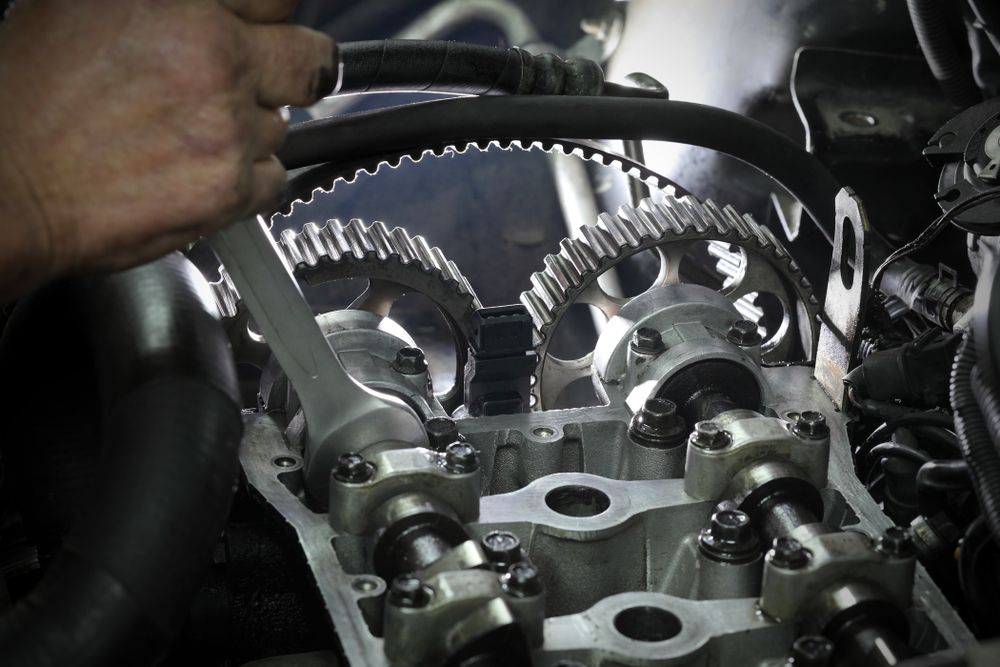
Worn or Damaged Cam Phasers
Over time, the internal components of a cam phaser can wear out or become damaged due to normal use, leading to excessive noise.
Poor Oil Quality or Low Oil Pressure
Cam phasers rely on proper lubrication from engine oil for smooth operation. If the oil is dirty, or contaminated, or if there’s insufficient pressure in the system, it can cause increased friction and subsequent noise within the cam phaser assembly.
Timing Chain Slackness
A loose timing chain could lead to improper functioning of the camshaft position sensor, which controls the movement of the camshaft gears inside your car’s engine, causing abnormal noises during operation.
Faulty Solenoid Valve Control Unit
The solenoid valve control unit regulates hydraulic pressure sent to adjust variable valve timing (VVT) systems like a cam phaser; malfunctions could result in erratic behavior and unwanted sounds.
Vibration
Sometimes what appears as noisy cam phasers may actually be caused by vibrations elsewhere in the car motor, such as worn bearings on pulleys.
How To Quiet Cam Phaser Noise
If you’re experiencing cam phaser noise, it’s essential to address the issue as soon as possible to prevent further damage and maintain optimal engine performance. Here are some steps you can follow to quiet the cam phaser noise.
Tools and Equipment Needed
First, to address cam phaser noise, you’ll need certain tools, including:
- Socket set and ratchet
- Torque wrench
- Screwdriver set
- Pliers or locking pliers
Step 1: Diagnose the Problem
Determine if your vehicle is indeed suffering from a noisy cam phaser by listening for any unusual sounds coming from the engine during operation. If you hear a ticking or rattling sound, especially at idle, this could indicate a bad cam phaser.
Step 2: Inspect Related Components
Inspect the timing chain tensioner, guides, and other related components for wear or damage that may contribute to the noise.
Step 3: Replace Faulty Parts
If necessary, replace any damaged or worn-out parts contributing to excessive play in your vehicle’s valvetrain system. This may include replacing a faulty camshaft actuator solenoid valve responsible for controlling oil flow within your car’s variable valve timing system.
Step 4: Clean the Cam Phaser
Remove and clean the cam phaser to ensure it is free of any debris or sludge that may be affecting its operation. You can use a part cleaner to remove dirt, grime, and other contaminants from your vehicle’s engine components.
Step 5: Reassemble and Test
Reinstall all removed parts, ensuring proper torque specifications are followed for each component. Start your vehicle and listen for any unusual noises coming from the engine. If you’ve successfully addressed the issue, you should notice a significant reduction in cam phaser noise.
Note that if these steps do not resolve the problem or if you’re unsure about performing them yourself, it’s always best to consult with a professional mechanic who has experience working with variable valve timing systems.
How Long Can You Drive With Bad Cam Phasers?
Driving with bad cam phasers is not advisable, as it can lead to severe engine damage and decreased performance. The duration for which you can continue driving your vehicle with faulty cam phasers depends on the severity of the issue and how quickly it worsens over time.
Driving with a bad cam phaser can cause vehicle issues over time, including:
- Decreased fuel efficiency: A malfunctioning cam phaser may cause your engine to consume more fuel than necessary, leading to increased expenses at the pump.
- Lack of engine power: Bad cam phasers often result in reduced engine power, making acceleration sluggish and unresponsive.
- Inconsistent idle speed: Your vehicle’s idle speed might fluctuate erratically due to poor timing adjustments caused by a failing cam phaser.
- Damaged valves or pistons: Prolonged use of a car with defective cam phasers could eventually cause damage to essential components like valves or pistons, necessitating costly repairs or even an entire engine replacement.
Conclusion
Cam phasers play an essential role in your vehicle’s valve timing system, and when they begin to fail or make noise, it can lead to various issues and, if left unfixed, can cause persistent and ongoing vehicle troubles.
Follow our step by step guide to determine the causes of cam phaser noise and how to quiet the house with specific tools and equipment.


